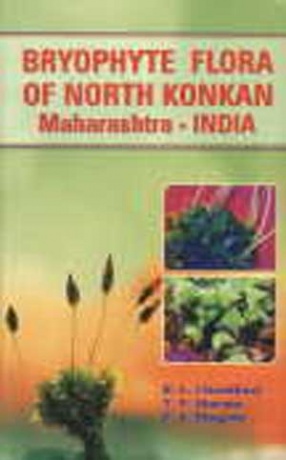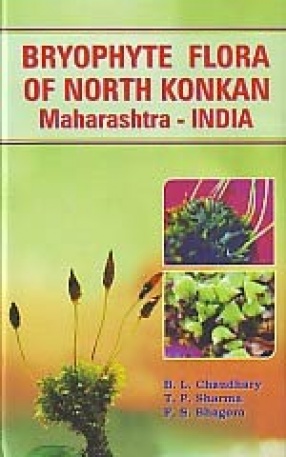Bryophyte Flora of North Konkan : Maharashtra (India)
Synopsis
Bryophytes are a diverse and distinct group of primitive plants, with about 25,000 species distributed the world over, making in the second largest group of land plants. They are considered as ‘amphibians of plant kingdom’ owing to their presence to aquatic and other moist habitats. Bryophytes are characterized by the absence of vascular tissues and having a unique life as Buxbaumia. Though considered as “Lilliputains of plant kingdom”, Bryophytes have achieved the greatest gametophytic diversity. The group includes three distinct lineages viz. liverwots, hornwots and mosses.
The present study provides the first hand consolidated account of Bryophytes of North Konkan, which includes detailed illustration, taxonomic account, ecology and phytogeographical consideration of 100 species of Bryophytes, belonging to 37 genera distributed over 24 families.
The North Konkan is characterized by Sandy splits intruding into mud flats and wider creeks close to the sea and by low coastal range separated by longitudinal valleys away from the coast, moreover, with the Thalghat and Bhorghat gaps in the Sahyadric, the North Konkan is actively linked with the vast real western gateway of India. Floristic study of Bryphytes has received little attention in India in general and North Konkan Coast in particular, through, this groups forms the largest group of land plants in term of species, not much attention has been paid of Bryophytes of North Konkan except the work of Dabhade (1966), Menon (1992), Palav (1994) and Patil (1996).
Read more
The present study provides the first hand consolidated account of Bryophytes of North Konkan, which includes detailed illustration, taxonomic account, ecology and phytogeographical consideration of 100 species of Bryophytes, belonging to 37 genera distributed over 24 families.
The North Konkan is characterized by Sandy splits intruding into mud flats and wider creeks close to the sea and by low coastal range separated by longitudinal valleys away from the coast, moreover, with the Thalghat and Bhorghat gaps in the Sahyadric, the North Konkan is actively linked with the vast real western gateway of India. Floristic study of Bryphytes has received little attention in India in general and North Konkan Coast in particular, through, this groups forms the largest group of land plants in term of species, not much attention has been paid of Bryophytes of North Konkan except the work of Dabhade (1966), Menon (1992), Palav (1994) and Patil (1996).
85.50
76.95
$
95.00 $
Free delivery Wolrdwidе in 10-18 days
Ships in 1-2 days from New Delhi
Membership for 1 Year $35.00
Get it now and save 10%
Get it now and save 10%
BECOME A MEMBER
Books by the same authors








Bibliographic information
T.P. Sharma
F.S. Bhagora